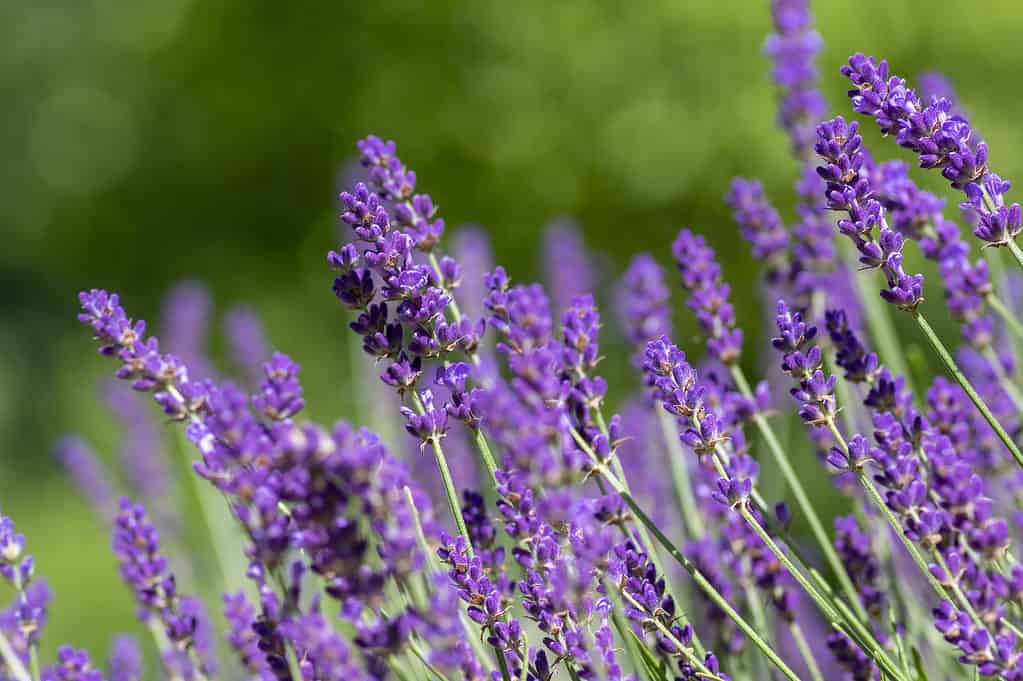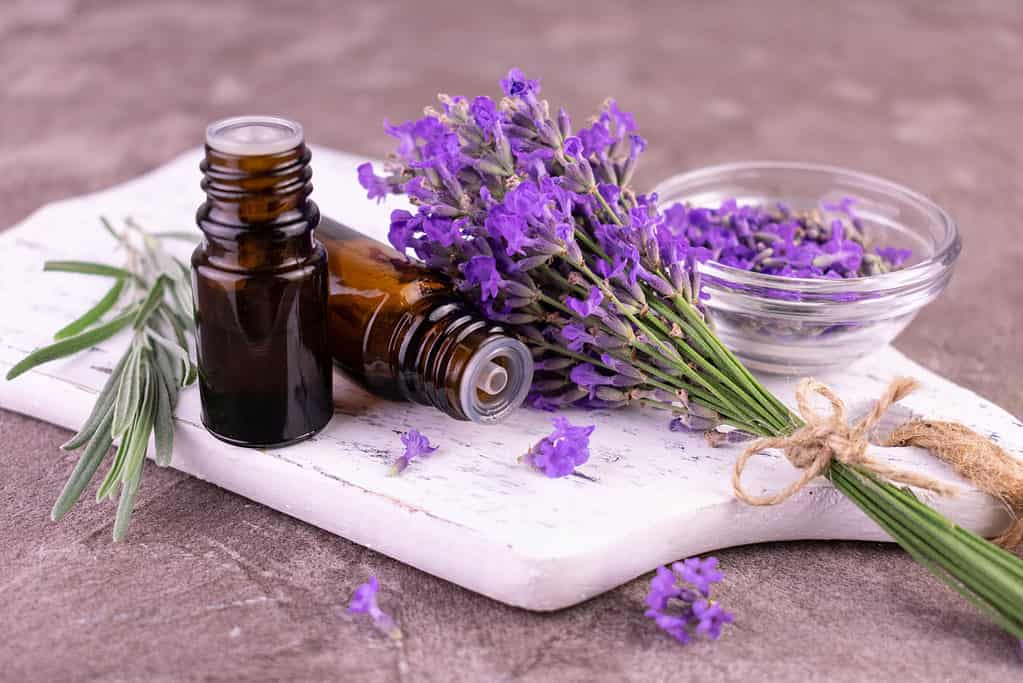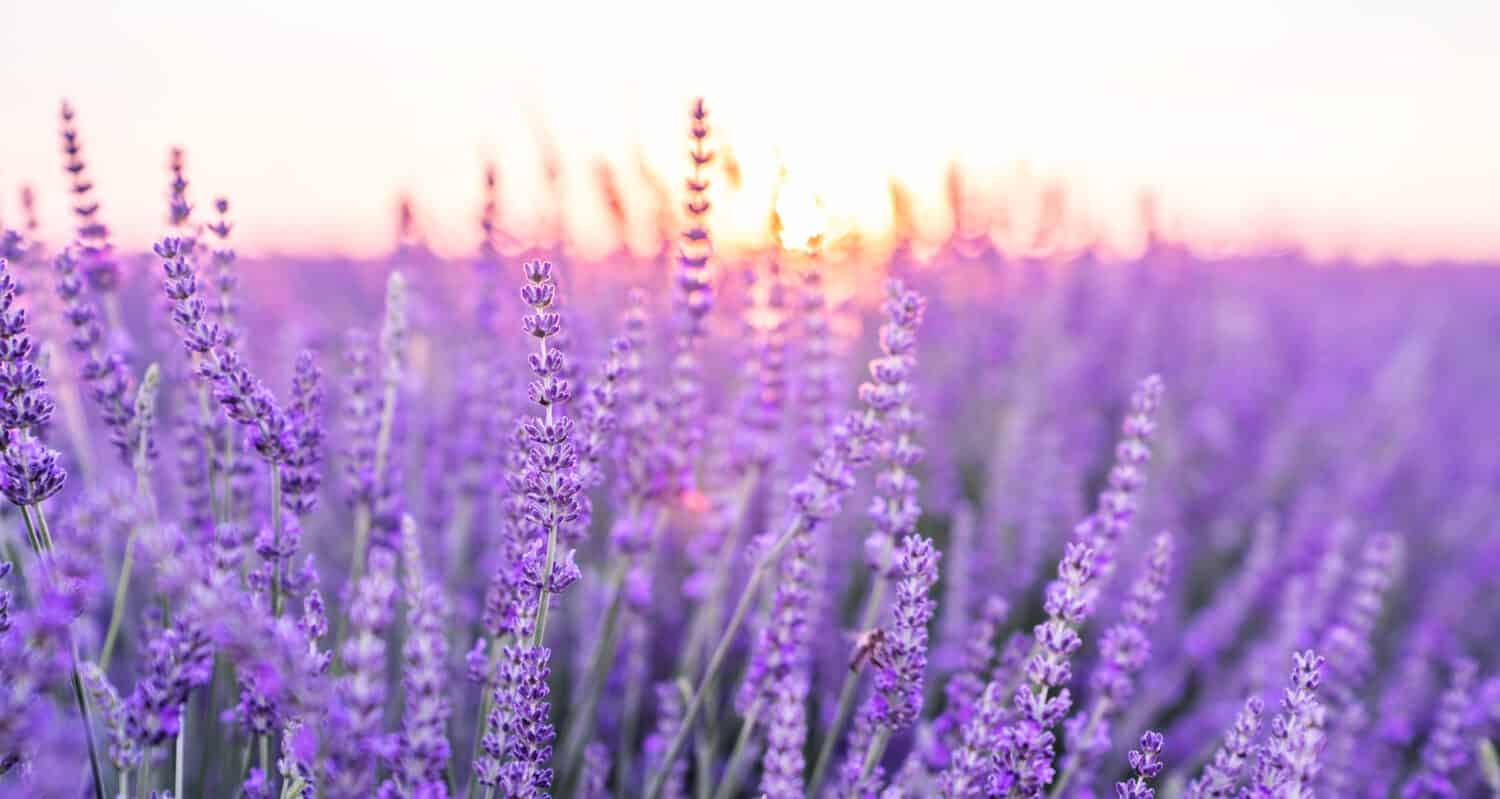Lavender is a gorgeous flower with an intoxicating aroma. It has captivated the hearts of so many people that it ended up making its way into countless body care products, cleaning products, and food items. However, lavender is a broad description for 45 species and 450 varieties! They all belong to the Lamiaceae (mint) family and can easily get grown at home. But if you are interested in planting this lovely flower for yourself, you likely have questions. One of those may be about growing lavender in shaded areas, and if it is even possible. We answer that question (and more) below.

Lavender is an easy-to-grow perennial flower.
©iStock.com/Iva Vagnerova
Can Lavender Tolerate Shade?
Yes, lavender can tolerate some shade, but not much. If you live in an extremely hot or humid environment, afternoon shade acts as protection from the most intense sunlight. However, too much shade can stunt the plant’s growth and slow down flower production.
There are a few shade-tolerant varieties, but even they need a minimum of 6 hours. So do your best to find a nice sunny location for your future lavender plants.
How Much Sun Does Lavender Need?
Lavender is a sun-loving and heat-loving plant. It does best when it gets full sun exposure. The minimum they need is six hours daily. But ideally, shoot for 8 to 10 hours daily for better growth.
When you ensure your lavender plants get adequate direct sunlight, you help reduce the risk of disease and improve the floral fragrance.
How to Plant Lavender
Some varieties will differ slightly in their care needs. So what follows is general advice that will work with most cultivars.
In general, plants should get spaced 12 to 18 inches apart. But if you live in a more humid environment, add some additional inches to ensure proper air circulation between the plants. Plant them in the spring after the fear of frost has passed.
Dig a hole twice as deep and tall as the root ball. The top of the root ball should be even with the soil line when you get it in the ground.
While lavender plants can handle poor soil, you may consider offering a boost by adding lots of compost at planting time. They prefer soil with 6.7 to 7.3 pH levels. Beyond that, they are not picky. Most lavender varieties can handle poor, sandy, or rocky soil. The only must is soil with adequate drainage since lavender can’t survive in moist environments.
Once you transplant your lavender, water thoroughly – this helps remove air pockets and compresses the soil around the newly planted lavender start. However, it is imperative to avoid overwatering. Wait until the top 2 inches of soil is dry before watering again.
Another difference is that since lavender prefers low to moderate-quality soil, it is important to avoid over-fertilizing. Too much fertilizer can kill the plants.
Finally, there is no need to mulch. But you can add gravel around the base, stopping a few inches from the plant.

Lavender flowers are beginner-friendly as long as you follow a few key care tips.
©blueeyes/Shutterstock.com
Lavender Pests and Diseases
Not many pests bother lavender plants, thanks to the fragrance so many people love. Some insects may pester the flowers. You can use an insecticidal soap or use strong water spray to knock them off.
Lavender is also not prone to disease. The main exception is in more humid environments, where fungal diseases can develop. If you live in one of these areas, plant your lavender further apart to increase airflow.
How to Harvest Lavender
Always leave roughly ⅓ of the plant when you harvest, so your plant has enough left to continue growing. Cut each stem down to the woody part. If you cut them too high up, the woody part will continue extending every year. And that will cost you valuable stem space for future cut flowers.
Even if you decide not to harvest lavender, you should deadhead it for continued growth.

Harvesting lavender is easy, relatively quick, and will give you long-lasting blooms that you can use for countless projects.
©iStock.com/Olivka888
How to Use Lavender
There are countless uses for lavender, depending on the variety you choose. You can add the stems to fresh flower arrangements, where they will last for many weeks. Or tie a bundle together and hang it upside down to dry.
Lavender is fantastic for a range of medicinal and culinary purposes. It works well in baked goods, tea, marinades, and sauces. Alternatively, it is also great for potpourri, bouquets, and dried floral arrangements.
Thank you for reading! Have some feedback for us? Contact the AZ Animals editorial team.








